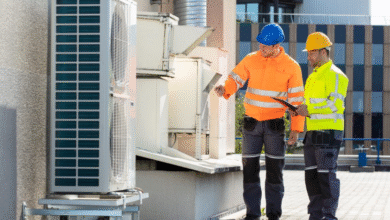Aluminium Batten Advantages and Applications in Modern Construction

Aluminium battens are architectural elements used for both functional and decorative purposes in building design. They provide a durable, low-maintenance solution for wall cladding, ceilings, fences, and gates, combining strength with aesthetic flexibility. Their corrosion resistance, lightweight nature, and adaptability make aluminium battens a preferred choice for modern construction projects.
These battens come in various sizes, finishes, and styles, including timber-look options that offer the visual appeal of wood without the upkeep. They can be installed vertically or horizontally, fitting seamlessly into a range of design schemes for interiors and exteriors alike.
Used widely across commercial and residential applications, aluminium battens contribute to ventilation, shading, and architectural expression. Their ease of installation and long-lasting properties enhance both the performance and visual impact of building facades and interior spaces.
Understanding Aluminium Battens
Aluminium battens are precise, lightweight profiles used widely in modern construction for both structural support and decorative purposes. Their design flexibility and material properties enable various applications while offering advantages over traditional materials. Differences with timber battens highlight durability and maintenance distinctions relevant to many projects.
What Is an Aluminium Batten?
An aluminium batten is a narrow, elongated strip made from high-grade aluminum alloys. It is manufactured typically through extrusion, a process where heated aluminum is shaped into continuous profiles with exact dimensions. This ensures strength, uniformity, and design versatility.
Aluminium battens serve as functional and decorative components in architecture. They are used for cladding, façade systems, interior walls, and ceilings. Their corrosion resistance and lightweight nature make them suitable for long-lasting installation in different environments.
The surface of aluminium battens can be treated with finishes like powder coating or woodgrain effects to enhance visual appeal and durability. These treatments add resistance against weathering and expand design options.
See also: Neeraj Pepsu Height: Exploring the Life and Physical Stats of Neeraj Pepsu
Key Applications of Aluminium Battens
Aluminium battens are primarily used in commercial and residential building exteriors and interiors. On façades, they create linear, clean lines that offer both aesthetic enhancement and functional benefits such as weather protection and ventilation.
Internally, they are applied in ceiling designs and feature walls to provide a modern, sleek appearance. Their fire-resistant properties make them a safer alternative to combustible materials in interior environments.
They also serve industrial purposes, where lightweight and robust components are necessary. Aluminium battens’ long lengths (up to 6 meters) allow use in large span installations without frequent joints or supports.
Aluminium Battens vs Timber Battens
Aluminium battens surpass timber battens in durability and maintenance. Unlike timber, aluminium does not rot, warp, or suffer from insect damage, reducing long-term repair and replacement needs.
From a fire safety perspective, aluminium is non-combustible, while timber poses a higher fire risk. Aluminium can also be finished to mimic natural wood textures, offering aesthetic versatility without timber’s vulnerabilities.
However, aluminium generally costs more upfront. Its installation requires different fasteners and skills compared to timber but results in a lighter, more dimensionally stable structure.
| Factor | Aluminium Battens | Timber Battens |
| Durability | Highly resistant to corrosion | Susceptible to rot and pests |
| Fire Resistance | Non-combustible | Combustible |
| Maintenance | Low | High |
| Aesthetic Options | Metallic or woodgrain finishes | Natural wood appearance |
| Weight | Lightweight | Heavier |
| Cost | Higher initial cost | Lower initial cost |
Design and Installation Considerations
Aluminium battens come in various profiles and finishes tailored to meet design and structural needs. Proper installation ensures stability, performance, and longevity. Routine maintenance preserves appearance and functionality over time.
Profiles and Finishes Available
Aluminium battens are manufactured in multiple profiles, such as flat, rounded, or angled shapes. These profiles can be customized to fit specific architectural requirements.
Finishes range from powder coating to wood grain effects, offering both aesthetic appeal and durability. Powder-coated surfaces provide corrosion resistance, while wood finish coatings mimic natural timber for visual warmth.
Sizes vary and can be produced to accommodate complex layouts and design patterns. The choice of alloy and grade affects strength and suitability for external use.
Installation Guidelines
Installation requires secure fixing of the base plates or clips to a prepared substrate, often with corrosion-resistant screws. Site accessibility and batten alignment, especially around corners, are critical for a clean finish.
Manufacturers recommend following specified building wraps, flashing, and cavity batten system requirements before installation begins. Installation by qualified tradespeople with proper PPE ensures safety and adherence to standards.
Concealed fixing systems use base and cover plates that click together, creating a rigid and visually clean structure without visible screws.
Maintenance Tips
Aluminium battens need minimal maintenance but should be inspected periodically for dirt accumulation or damage. Cleaning with mild soap and water is typically sufficient to remove grime.
Avoid abrasive cleaners or high-pressure washing that can damage the coating. Check for signs of corrosion, especially in coastal or industrial areas, and address them promptly.
Repainting or touch-ups on damaged areas can extend life and maintain appearance. Regular inspection of fixation points prevents loosening over time.




